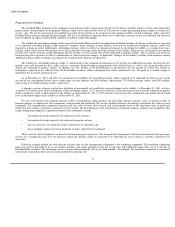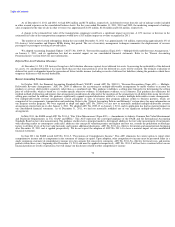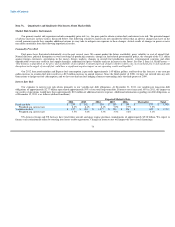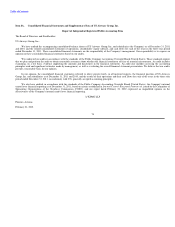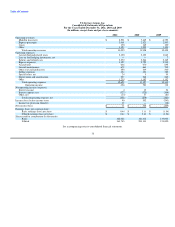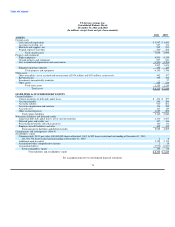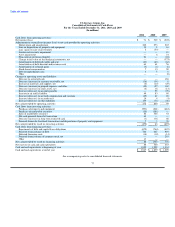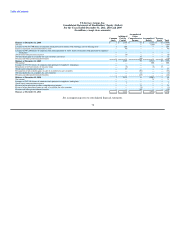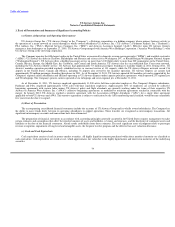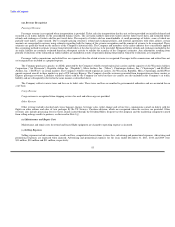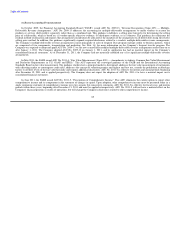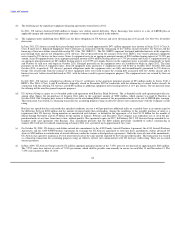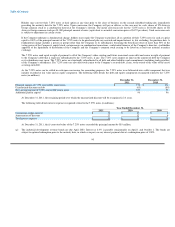US Airways 2011 Annual Report Download - page 83
Download and view the complete annual report
Please find page 83 of the 2011 US Airways annual report below. You can navigate through the pages in the report by either clicking on the pages listed below, or by using the keyword search tool below to find specific information within the annual report.
Table of Contents
(d) Investments in Marketable Securities
Investments in marketable securities classified as noncurrent assets on the Company's consolidated balance sheet represented investments expected to
be converted to cash after 12 months. The Company's investments in marketable securities consisted of auction rate securities, which were classified as
available for sale and recorded at fair value. The Company sold its remaining investments in auction rate securities in 2011. See Note 6(b) for more
information.
(e) Restricted Cash
Restricted cash primarily includes cash collateral to secure workers' compensation claims and credit card processing holdback requirements for advance
ticket sales for which US Airways has not yet provided air transportation.
(f) Materials and Supplies, Net
Material and supplies, net includes aircraft fuel, which is recorded on a first-in, first-out basis, and aircraft spare parts and supplies, which are recorded
at net realizable value based on average costs. These items are expensed when used. An allowance for obsolescence is provided for aircraft spare parts and
supplies.
(g) Property and Equipment
Property and equipment are recorded at cost. Interest expense related to the acquisition of certain property and equipment, including aircraft purchase
deposits, is capitalized as an additional cost of the asset or as a leasehold improvement if the asset is leased. Interest capitalized for the years ended
December 31, 2011, 2010 and 2009 was $8 million, $4 million and $10 million, respectively. Property and equipment is depreciated and amortized to residual
values over the estimated useful lives or the lease term, whichever is less, using the straight-line method. Costs of major improvements that enhance the
usefulness of the asset are capitalized and depreciated over the estimated useful life of the asset or the modifications, whichever is less.
The estimated useful lives of owned aircraft, jet engines, other flight equipment and rotable parts range from five to 30 years. Leasehold improvements
relating to flight equipment and other property on operating leases are amortized over the life of the lease or the life of the asset or improvement, whichever is
shorter, on a straight-line basis. The estimated useful lives for other owned property and equipment range from three to 12 years and range from 18 to 30 years
for training equipment and buildings.
The Company records impairment losses on long-lived assets used in operations when events and circumstances indicate that the assets might be
impaired. Recoverability of assets to be held and used is measured by a comparison of the carrying amount of an asset to undiscounted future net cash flows
expected to be generated by the asset. If such assets are considered to be impaired, the impairment to be recognized is measured by the amount by which the
carrying amount of the assets exceeds the fair value of the assets. Assets to be disposed of are reported at the lower of the carrying amount or fair value less
cost to sell.
(h) Income Taxes
Income taxes are accounted for under the asset and liability method. Deferred tax assets and liabilities are recognized for the future tax consequences
attributable to differences between the financial statement carrying amounts of existing assets and liabilities and their respective tax bases and operating loss
and tax credit carryforwards. A valuation allowance is established, if necessary, for the amount of any tax benefits that, based on available evidence, are not
expected to be realized.
80



